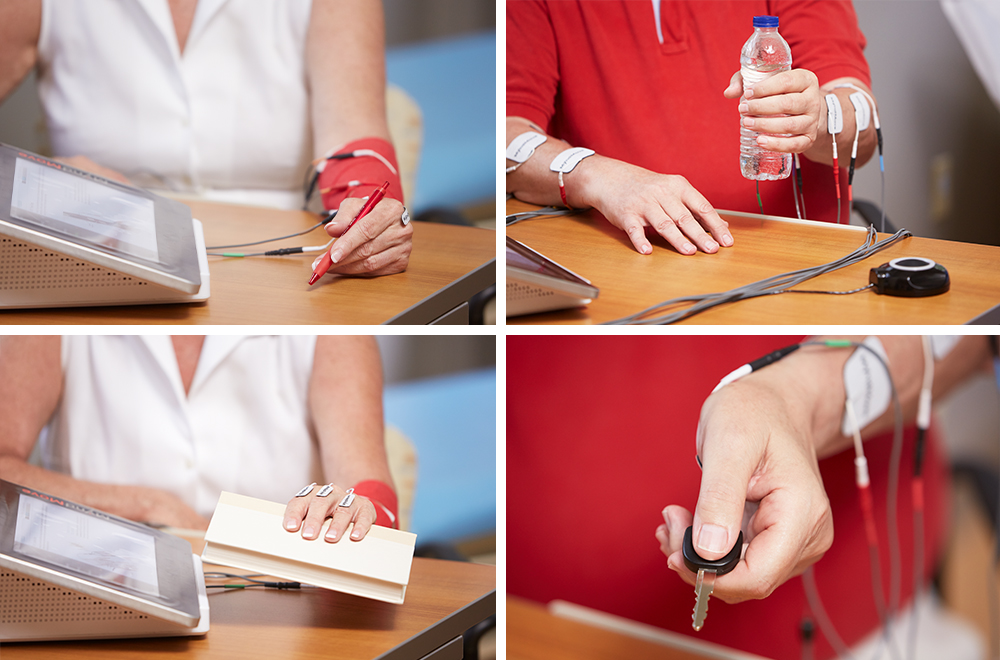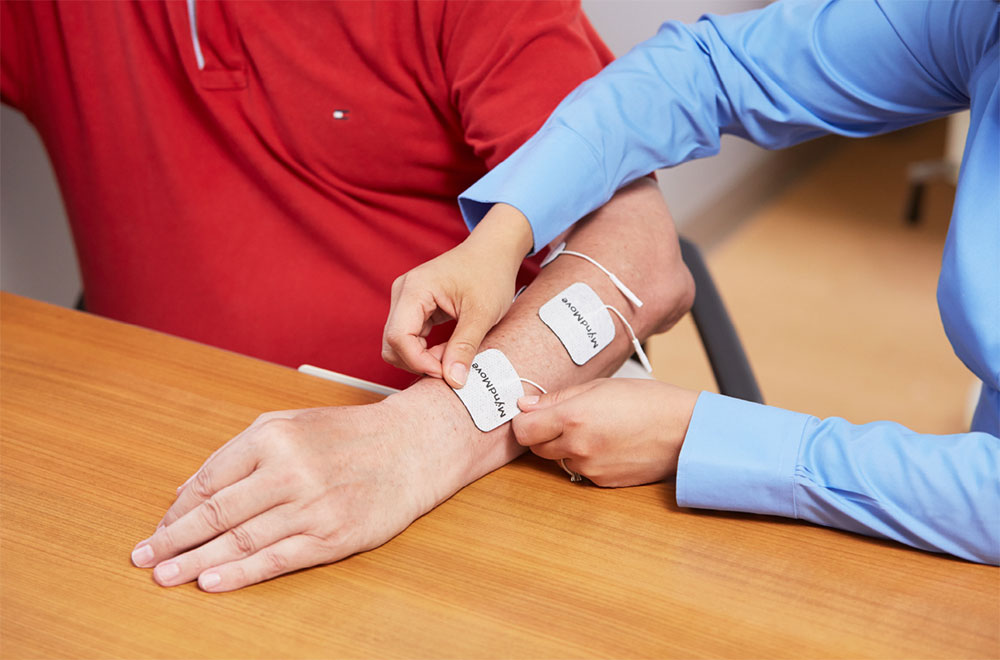In light of Spinal Cord Injury (SCI) Awareness Month, we are taking a deeper dive into one of the services that we provide for our clients with SCIs. The MyndMove is an evidence-based and innovative technology that helps individuals with upper extremity paralysis regain voluntary control. Health Bound is a proud provider of this specialized service, and we have asked one of our own occupational therapists, Ani Davtyan, to explain the details of how MyndMove therapy works and who could benefit from it!
One of the issues that people experience following tetraplegia (a spinal cord injury at the cervical level of the spine) is decreased strength/sensation in their upper extremities. Having decreased muscle strength in the arms, shoulders, and/or hands, which can be very limiting from a functional point of view as it can result in difficulties with carrying out basic daily activities, such as eating, grooming tasks like brushing teeth, and dressing. Working with an occupational therapist (OT) following such an injury can be beneficial as we can recommend new/compensatory strategies to increase your independence with the completion of your daily tasks. Your OT can also recommend remedial/restorative therapy options to help you regain strength in your upper extremity muscles to increase your function. The type of therapy will be determined by your OT based on your goals and level of injury. One of the therapy tools that we use at Health Bound to help our clients with tetraplegia restore lost strength in their upper extremities is the MyndMove.
Myndmove is a device that provides functional electrical stimulation via electrodes to paralyzed muscles/nerves to restore voluntary control. Electrodes are placed over specific areas on the client’s muscles by a trained therapist (OT or PT), through which electrical stimulation is delivered to the client’s muscles to generate a functional movement. For example, an individual who has limited control of their fingers as a result of a spinal cord injury can benefit from the electrodes of this device being placed on the various muscle groups of their fingers/hand to help elicit the movement that they are unable to achieve independently. The movement is usually combined with a functional task; in the case of the hand, the task could be holding a pen in an attempt to write. The therapist and the client choose the intensity of the stimulation and practice the task together throughout the session. Sessions can be scheduled 3-5 times a week, based on the client’s goals, limitations and tolerance.
You may be wondering if this procedure is painful. The stimulation itself is not painful; it feels like a tingling sensation; however, some individuals may perceive it as painful if their ability to process sensory feedback is altered due to their SCI. That said, the therapist and the client are working together to find the most comfortable/optimal level of intensity to prevent the treatment from being painful or uncomfortable.
How does the Stimulation Translate into Improved Strength/Voluntary Control?
Studies have shown that when FES is applied to paralyzed muscles or nerves in a coordinated pattern, it can result in increased voluntary control of those muscles. This is a result of neuroplasticity , the mechanism by which our brains relearn lost behaviour in response to a stimulus. Clinical studies show that based on the concept of neuroplasticity, patients who are receiving MyndMove therapy are able to regain lasting voluntary motor control of a paralyzed muscle. These studies have found that the Myndmove protocols and device are an effective therapeutic modality that can improve hand and arm function in:
~ individuals with C3-C7 incomplete SCI
~ individuals with severe hemiplegia due to stroke
One of the studies compared two groups of individuals experiencing upper extremity paralysis due to SCI in an 8-week period; a group of individuals who underwent 40 hours of FES therapy with MyndMove combined with conventional OT and a group of individuals who had 40 hours of conventional occupational therapy (COT) only. Participants were treated five days per week over an 8-week period. The results of the study concluded that the participants in the first group who had received MyndMove + COT experienced statistically significant improvements in their function. To learn more about the clinical evidence behind this device click below https://www.myndtec.com/clinicians/clinical-evidence/.
If you are interested to learn more about this treatment modality or would like to know if you are a candidate for this treatment, please contact us at [email protected] or call us at 416-548-7872 and schedule a free consultation with one of our trained therapists.
Reference:
Popovic MR, Kapadia N, Zivanovic V, Furlan J, Craven BC, McGillivray C. Functional Electrical Stimulation Therapy of Voluntary Grasping Versus only Conventional Rehabilitation for Patients with Subacute Incomplete Tetraplegia: A Randomized Clinical Trial. Neurorehabilitation and Neural Repair. 2011:25:5-433.





